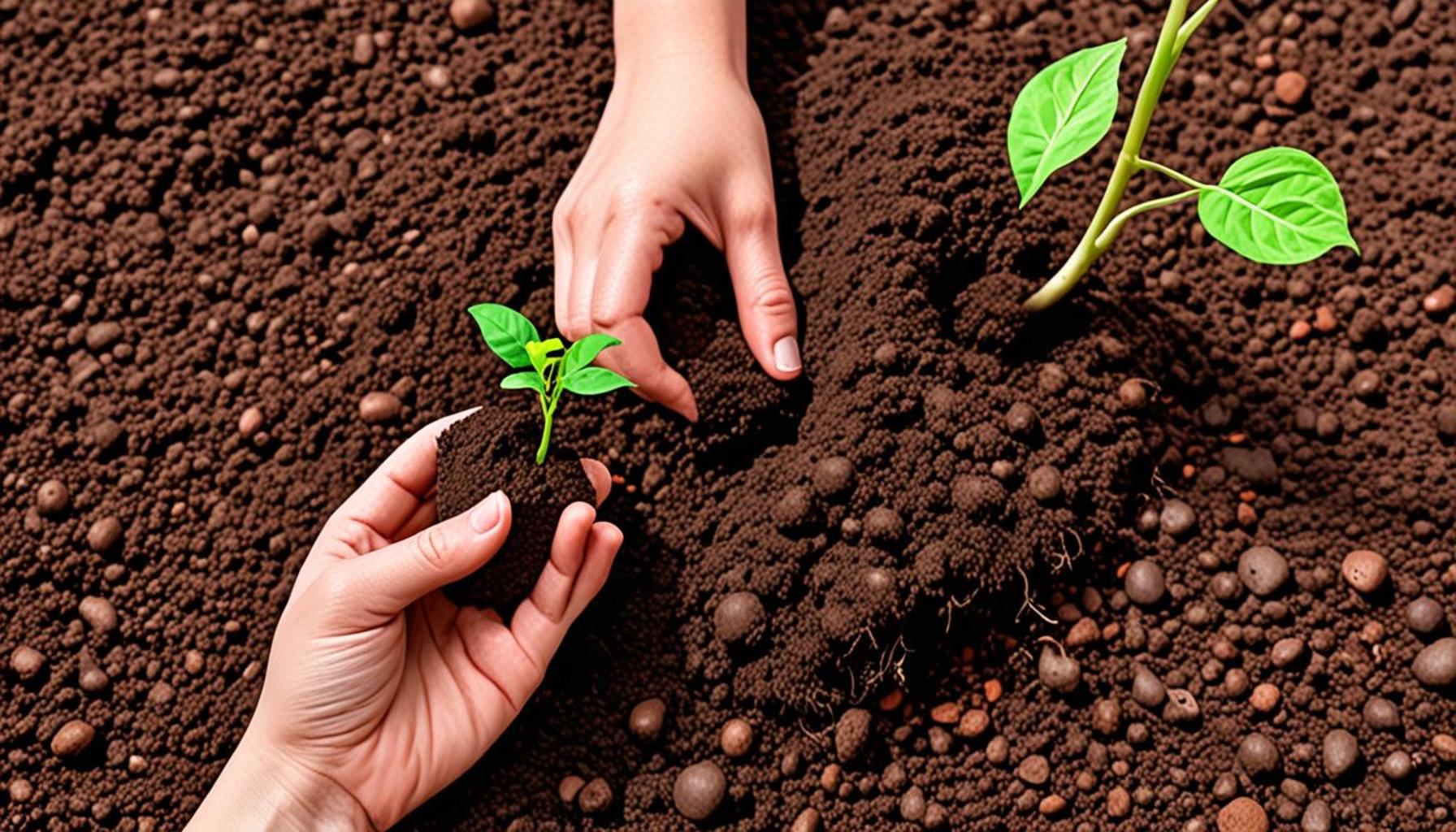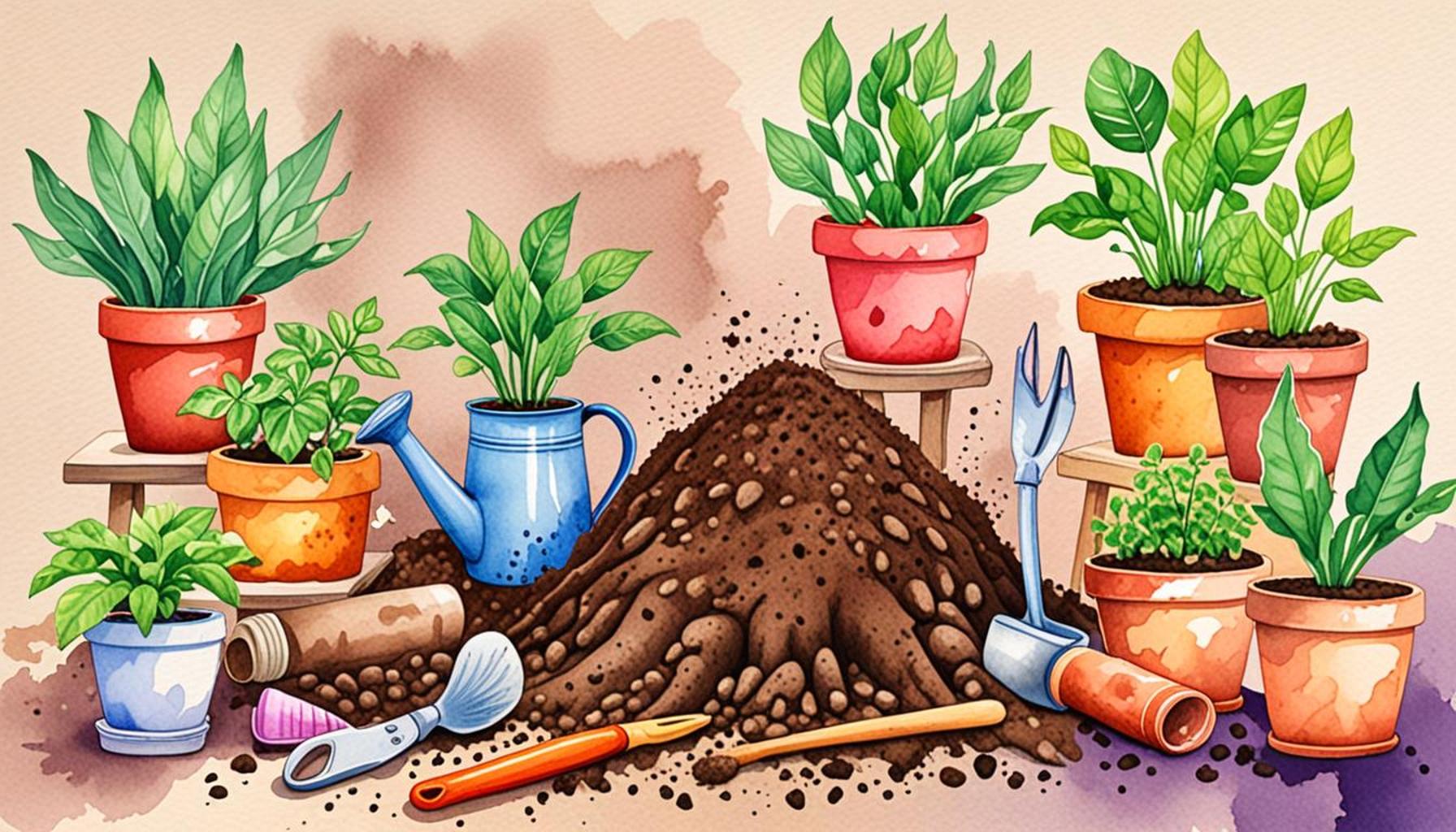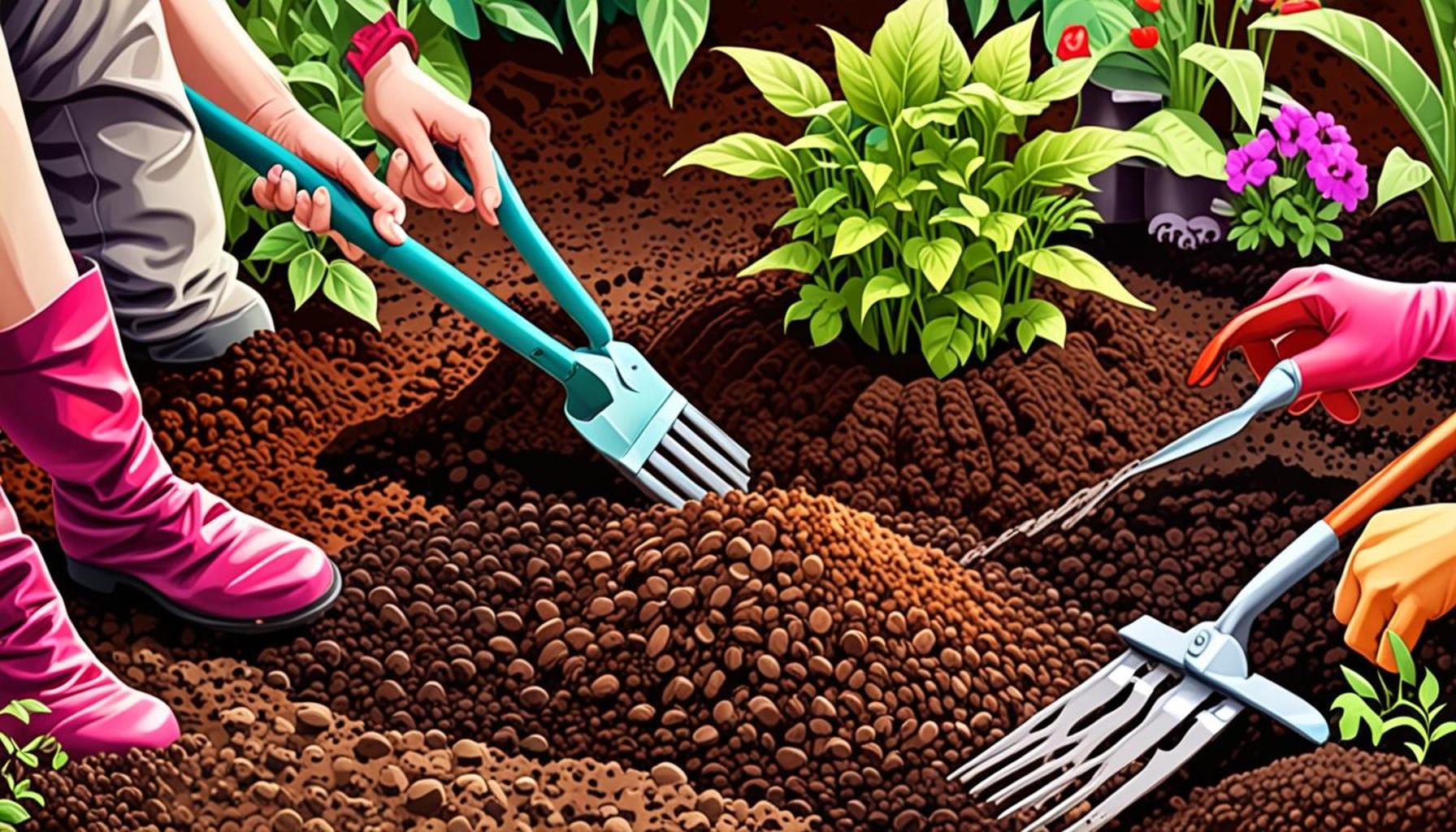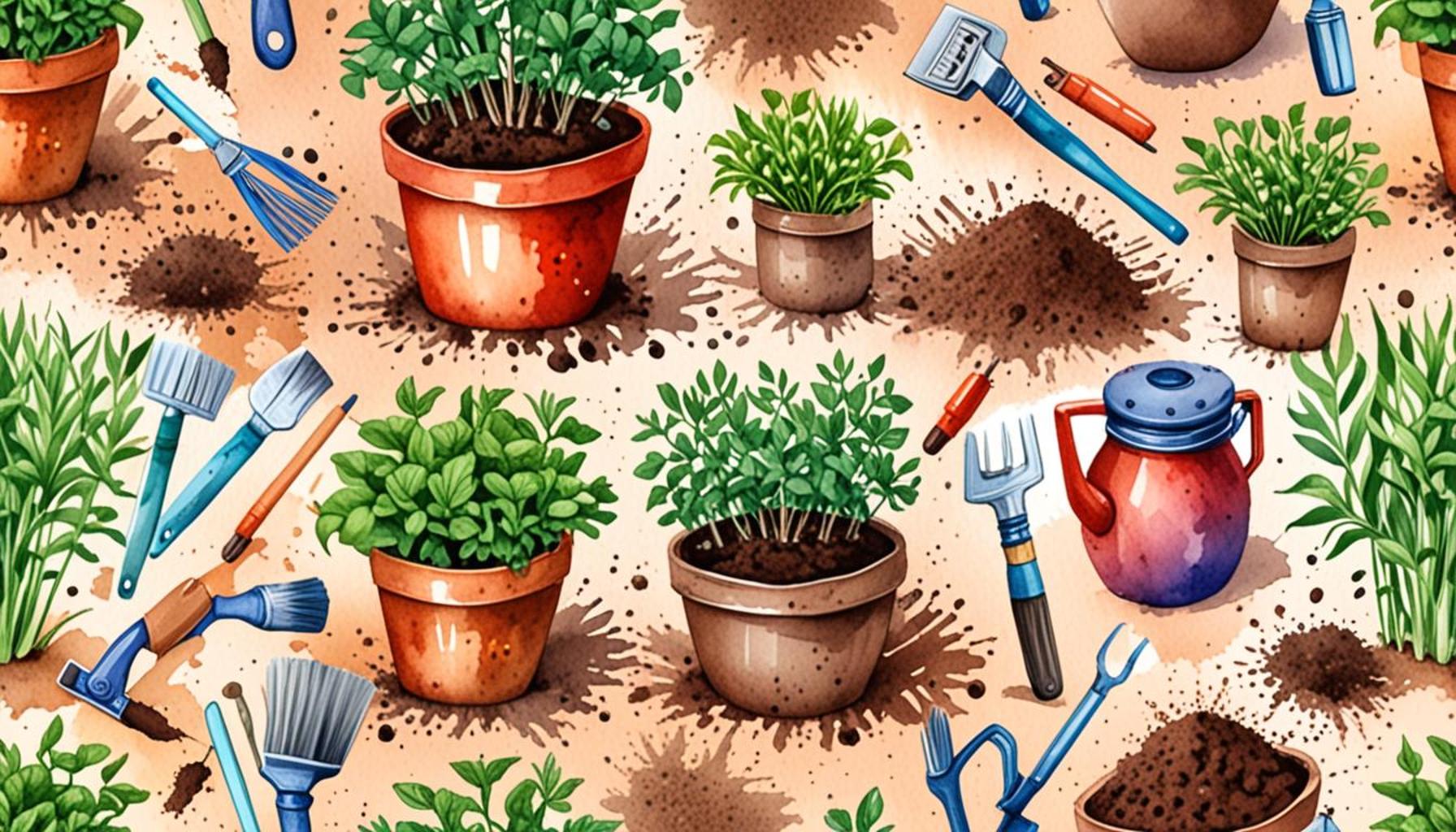How to Test and Improve Soil Quality Before Planting

Understanding Soil Quality
Soil serves as the crucial foundation of any successful garden or agricultural venture. Its quality has a profound impact on multiple factors, including plant growth, yield, and resilience against pests and diseases. Healthy, nutrient-rich soil teeming with beneficial microorganisms can greatly enhance plant vitality. Before embarking on any planting, testing soil quality is essential to ensure your plants thrive in their environment.
Importance of Soil Testing
- Assess Nutrient Levels: A well-conducted soil test helps determine the availability of key nutrients such as nitrogen, phosphorus, and potassium. These macronutrients are vital for plant health—nitrogen promotes lush foliage, phosphorus supports root and flower development, while potassium is crucial for overall plant function. Without a thorough analysis, gardeners may inadvertently over- or under-fertilize their soil, wasting resources and potentially harming their plants.
- Check pH Levels: The pH level of the soil, which indicates its acidity or alkalinity, is crucial for nutrient absorption. Most plants thrive in slightly acidic to neutral pH levels (between 6.0 and 7.0). A soil test can inform you if amendments are necessary, such as lime to raise pH or sulfur to lower it, ensuring optimal nutrient uptake by plants.
- Identify Contaminants: Soil testing allows for the early detection of harmful substances such as heavy metals, pesticides, or pathogens that could impair plant health and pose risks to human consumption. For example, urban gardeners might find high lead levels in soil from historical contamination, making testing a critical step before planting edible crops.
Conducting a soil test is not merely a one-off task; it is an ongoing process that helps you continuously improve soil quality. By regularly evaluating your soil’s characteristics, you can make informed decisions regarding necessary amendments and fertilization strategies, ultimately leading to more fruitful gardening outcomes.
Ways to Enhance Soil Quality
- Add Organic Matter: Incorporating compost or well-rotted manure is perhaps one of the most effective ways to enrich soil structure. Organic matter improves moisture retention, fosters beneficial microbial activity, and introduces essential nutrients to the soil. For instance, making your own compost from kitchen scraps and yard waste could be a sustainable way to bolster soil health while minimizing landfill contributions.
- Rotate Crops: Implementing a crop rotation strategy involves changing the types of plants you grow in a given area each season. This practice helps preserve soil health by preventing the depletion of specific nutrients and disrupting pest and disease cycles. For example, rotating legumes with cereals can benefit the soil by allowing nitrogen-fixing plants to replenish soil fertility.
- Implement Cover Crops: Utilizing cover crops, such as clover or vetch, can significantly improve soil quality during fallow periods. These plants enhance soil fertility, reduce erosion, and suppress weeds. Cover crops also contribute organic matter back into the soil when they are tilled under before planting cash crops.
With the right knowledge and practices in place, you can cultivate an environment that nurtures vibrant and healthy plant life. Delve into the methods outlined in this article to unlock the full potential of your garden and create a flourishing ecosystem right in your backyard.
DISCOVER MORE: Click here for tips on testing and improving your garden’s soil
Essential Steps for Testing Soil Quality
Before you dive into planting, gaining a comprehensive understanding of your soil’s quality is crucial. The process of soil testing involves several steps that can provide valuable insights into its condition. Here’s how to effectively assess your soil:
1. Collecting Soil Samples
The first step in testing soil quality is to collect samples from your garden or planting area. During this process, consider the following guidelines:
- Choose Multiple Locations: To get a representative sample, take soil from several locations within your garden. It’s best to sample from diverse areas since soil can vary significantly across a single plot.
- Use Clean Tools: Ensure that you use clean tools, such as a spade or trowel, to avoid contaminating the samples. Collect about 1 cup of soil from each site to mix later.
- Avoid Contaminated Areas: Stay clear of spots where chemicals, animal waste, or mulch piles have been applied, as these might skew your results.
Once you’ve gathered your soil samples, thoroughly mix them in a clean container, removing any debris, and store them in a labeled bag for further testing.
2. Choosing a Soil Testing Method
There are various methods to test soil quality, each with its benefits:
- Home Testing Kits: Widely available at garden centers, these kits allow you to test for pH and major nutrients such as nitrogen, phosphorus, and potassium. They typically come with easy-to-follow instructions, making them suitable for the home gardener.
- University Extension Services: Many universities offer soil testing services for a nominal fee. By sending your collected samples to these services, you can obtain in-depth analyses, including nutrient levels, pH, and organic matter content, along with recommendations for amendments.
- Professional Soil Testing Laboratories: For larger farms or more serious gardeners, hiring a professional lab can provide extensive data. These labs can test for additional factors, such as soil texture, compaction, and the presence of contaminants.
3. Interpreting Soil Test Results
After receiving your test results, understanding the data is key to improving soil quality. Most reports will indicate:
- Nutrient Levels: Each nutrient will be measured in parts per million (PPM). Compare these values to optimal ranges to determine what amendments may be needed.
- pH Level: This will often fall on a scale of 0 to 14. A score below 6.0 indicates acidity, while above 7.0 indicates alkalinity. You should adjust your soil according to the needs of specific plants.
- Organic Matter Content: This percentage reveals the soil’s ability to retain moisture and nutrients, affecting its overall health.
By carefully following these techniques for testing and interpreting soil quality, you can make informed decisions that will lay a solid foundation for your planting efforts.
How to Test and Improve Soil Quality Before Planting
Understanding soil quality is essential for any gardener or farmer aiming to achieve a thriving plantation. Testing your soil not only helps in determining its pH, nutrient levels, and organic matter composition, but also in identifying specific amendments required to enhance its overall quality. Furthermore, improving soil quality is a proactive way to ensure your plants receive the necessary nutrients and support for healthy growth.
| Testing Techniques | Improvement Strategies |
|---|---|
| Soil testing kits | Incorporating organic matter |
| Laboratory analysis | Utilizing cover crops |
The first step involves using soil testing kits, which are available at local gardening stores. These kits provide a quick and convenient way to assess soil pH and nutrient levels. For more in-depth analysis, consider sending samples to a laboratory. Professional testing can reveal detailed nutrient contents and soil textures, allowing for more tailored amendments.
Once you have a better understanding of your soil’s profile, you can begin to implement improvement strategies. Incorporating organic matter such as compost or well-rotted manure can significantly enhance soil structure and fertility. Additionally, utilizing cover crops can prevent soil erosion, improve moisture retention, and suppress weeds, ultimately leading to healthier soil environments for planting.
Through appropriate testing and improvement measures, you can embark on a journey towards optimal soil quality, which is crucial in achieving fruitful harvests. By investing time and resources into understanding your soil, you set the foundation for a successful planting season.
DIVE DEEPER: Click here to learn how to enhance your garden’s soil quality
Enhancing Soil Quality Through Amendments
Once you’ve completed soil testing and interpreted the results, the next essential step is to focus on how to improve soil quality. Depending on the test findings, certain amendments can revitalize your soil, ultimately leading to a successful planting experience. Below are some strategies for enriching your soil with necessary nutrients and improving its structure.
1. Adding Organic Matter
One of the most effective ways to enhance soil quality is by incorporating organic matter. This can include:
- Compost: Rich in nutrients, compost not only provides food for plants but also improves soil structure, moisture retention, and microbial activity. Aim to mix in a 2-4 inch layer of well-aged compost to your garden bed before planting.
- Manure: Well-composted animal manure is another excellent organic amendment. Ensure it has been aged enough to eliminate pathogens, as fresh manure may harm plants. It contributes both essential nutrients and beneficial bacteria to the soil.
- Cover Crops: Planting cover crops, such as clover or rye, during off-seasons can enrich the soil. As they grow, these plants improve soil structure and their roots help in reducing erosion. When tilled back into the soil, they act as a natural fertilizer.
2. Adjusting Soil pH
Based on your soil test, you may need to adjust pH levels to optimize nutrient availability. Here are effective ways to do this:
- Adding Lime: If your soil is too acidic (a pH below 6.0), adding agricultural lime can help raise the pH level. It not only corrects acidity but also adds calcium to the soil, crucial for many plants.
- Sulfur Application: Conversely, if your soil is too alkaline (a pH above 7.0), element sulfur can effectively lower the pH gradually. This process might take time, so regular monitoring is advisable.
Understanding how to effectively manage the pH of your soil will help ensure that your plants can absorb vital nutrients efficiently, boosting their growth potential.
3. Fertilizing Based on Nutrient Requirements
After analyzing the nutrient levels in your soil test results, you can tailor your fertilization efforts:
- Balanced Fertilizers: For generalized nutrient deficiencies, consider a balanced fertilizer with equal concentrations of N-P-K (Nitrogen-Phosphorus-Potassium), such as a 10-10-10 mixture. This will support overall plant performance.
- Targeted Supplements: For specific nutrient deficiencies, such as phosphorus or potassium, look for fertilizers enriched with those elements. For instance, bone meal is an excellent source of phosphorus, while potash provides potassium.
- Granular vs. Liquid Fertilizers: Understand the difference between granular and liquid fertilizers. Granular options release nutrients slowly, while liquid fertilizers offer faster availability, making them useful during the early growth phase of plants.
By customizing your fertilization practices to match the nutrient availability revealed in your soil test, you’ll be well on your way to creating a thriving planting environment.
4. Improving Soil Structure Through Aeration
Soil structure plays a significant role in root growth and water drainage. Compacted soil can inhibit plant development. Consider these methods to improve soil aeration:
- Tilling: Carefully tilling your garden can break up compacted soil layers, creating air spaces and promoting root penetration. However, be cautious not to over-till, which may disrupt beneficial microorganisms.
- Using Aeration Tools: Tools like a garden fork or a specialized aerator can create holes in compacted soil, helping to boost aeration and drainage.
- Mulching: Applying a layer of organic mulch can also help improve soil structure over time. Mulch prevents soil erosion, retains moisture, and gradually decomposes, increasing organic matter content.
By focusing on these comprehensive soil improvement techniques, you will enhance the foundation upon which your plants will thrive, ultimately maximizing both growth potential and crop quality.
DIVE DEEPER: Click here to learn more
Conclusion
In conclusion, understanding how to test and improve soil quality before planting is vital for anyone aspiring to cultivate a thriving garden or productive farmland. A well-planned approach begins with comprehensive soil testing, which unveils essential data on nutrient levels, pH balance, and overall soil health. This initial investment in knowledge lays the groundwork for informed amendment strategies, ensuring that your soil is ready to support robust plant growth.
Through the incorporation of organic matter such as compost and manure, you can transform your soil, enriching it with essential nutrients and boosting microbial activity. Adjusting pH, either through lime or sulfur, further optimizes the soil environment for nutrient absorption, fostering healthier plants. Fertilization tailored to specific soil requirements can maximize plant performance and reduce waste, providing a sustainable way to achieve desired results. Lastly, enhancing soil structure through aeration techniques improves root penetration and water drainage, creating an ideal habitat for plant roots.
By actively engaging in these practices, you are not merely preparing a garden bed but are investing in the future vitality of your plants and the overall ecosystem. Additionally, consider researching sustainable agriculture practices, reducing the use of chemical fertilizers, and exploring local resources for soil improvement. Your choices today will not only yield bountiful harvests but also contribute positively to environmental health. Embrace the journey of soil stewardship, as it will reward you with lush, flourishing gardens for seasons to come.


